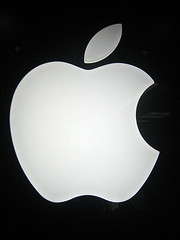The Apple Watch’s Biggest Problem is Apple

Photo courtesy of flickr/Paul Downey
Apple’s famous logo impresses
March 16, 2015
The Apple Watch is the most confusing product in Apple’s recent history. Since Jobs took over the company in 1997, every product released has had a clearly defined purpose, a revolutionary concept. With the Apple Watch, Apple has failed to portray its product as anything meaningful.
The Apple Watch will cost anywhere between $350 for the aluminum model, to $10,000 for the gold model, with prices changing depending on the material and bands used. Anyone who hopes to use an Apple Watch must already have one of Apple’s latest iPhones, devices that can cost upwards of 1000 dollars off contract. Apple convinces its customers they are paying for a premium experience when they buy an iPhone, that it is the best product they can buy and is worth its excessive price. Introducing a new device for the purpose of using the iPhone less does not make any sense. Customers spend money on iPhones because they want the best experience available for messaging and apps. There is no logic in turning around and buying a smaller device with inferior technology.
Nearly every app and capability Apple has introduced on its new watch can already be done on the iPhone. Why struggle to type out a message on a tiny screen on your wrist when you could comfortably type it on your phone, and spare your wallet the Apple Watch’s$350 price tag.
In fact, the only feature that can be found on the Apple Watch and not on the iPhone are the precise fitness tracking capabilities. The Apple Watch is designed to be a top notch fitness tracker, complete with heart rate sensor and all, however Apple’s advertising and pricing does little to promote this.
So far, the way Apple has presented the Apple Watch has been all about luxury and functionality, staying in line with the typical Apple image. Unfortunately, there is nothing sexy about squinting at a tiny screen on your wrist, and there is little functional advantage of the watch’s smaller screen. Apple is taking an opposite approach to advertising than its successful fitness tracker competitors.
Looking at advertising by Fitbit and Jawbone, the leading fitness tracker manufacturers, its clear that their products were designed to be nondescript and blend into users’ daily lives. Can Apple’s different approach be successful? More importantly, can the Apple Watch succeed without marketing playing to its strengths?


















































